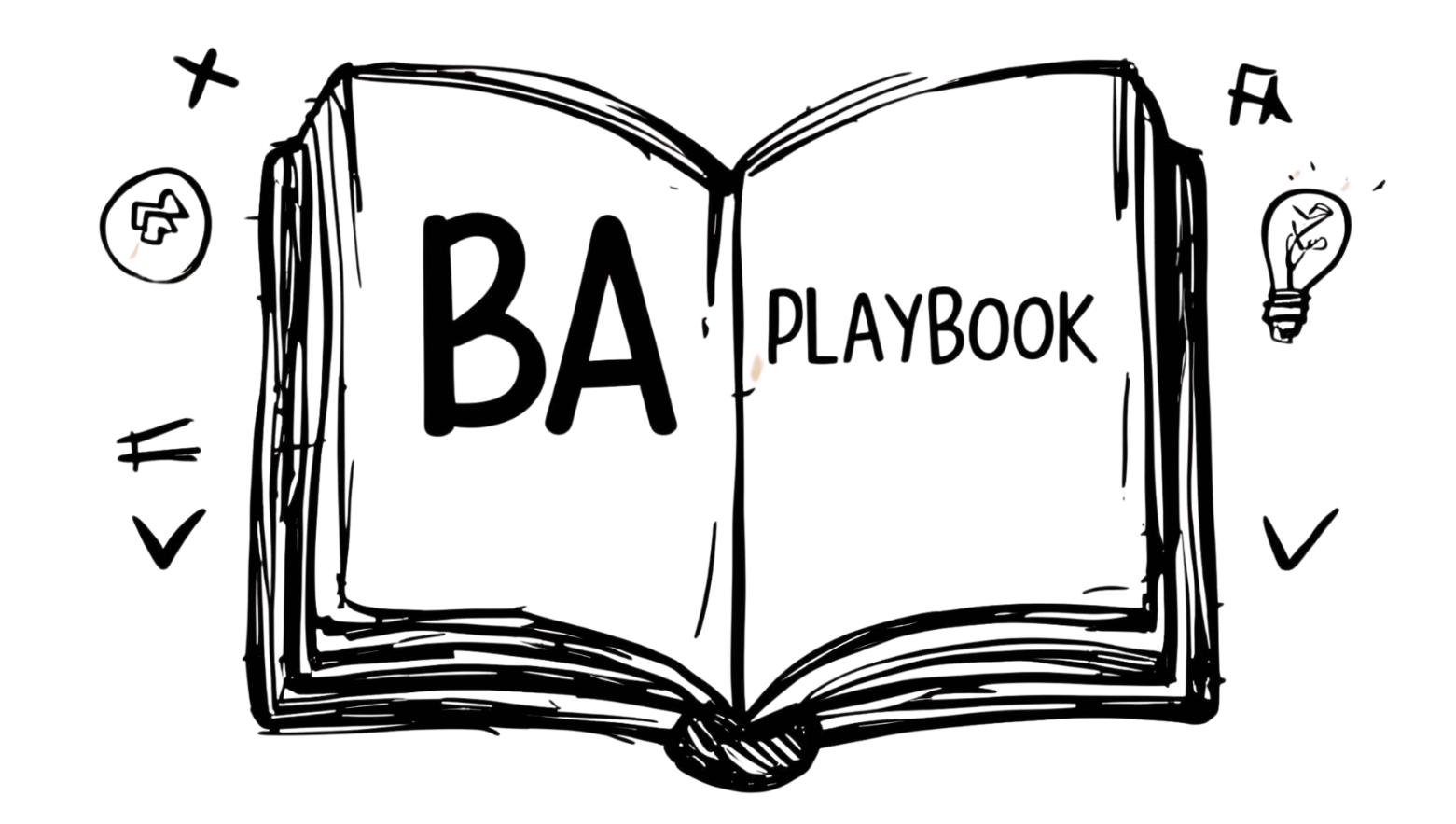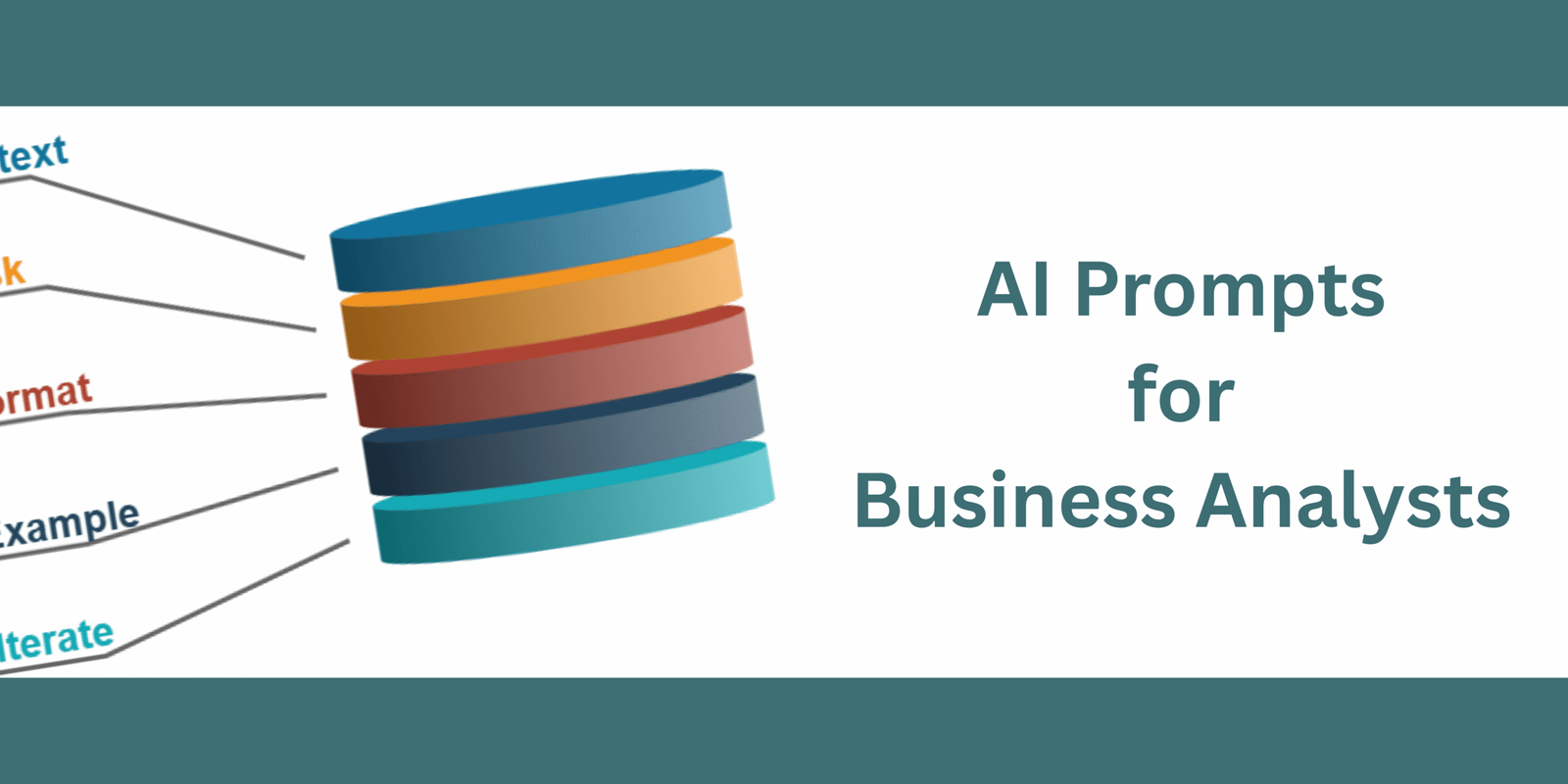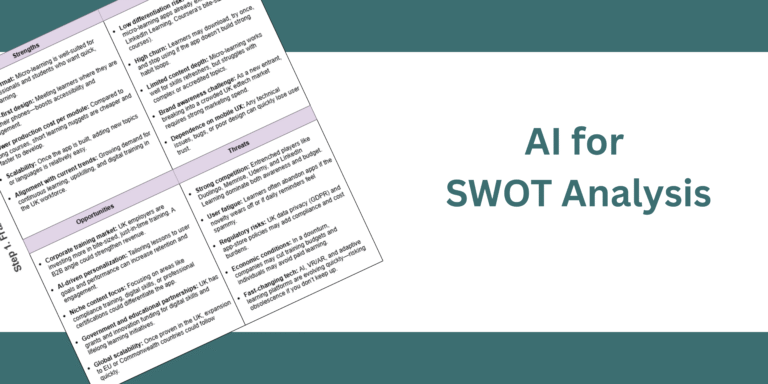AI Prompts for Business Analysts: A Practical Guide
Artificial Intelligence is quickly becoming the ultimate sidekick for business analysts. From drafting requirements to summarizing stakeholder interviews, AI can save hours of work and free you up for the higher-value thinking that only humans can do.
But here’s the catch: AI is only as good as the prompts you give it.
If you throw in a vague “analyze this data,” you’ll probably get a vague answer back. The real magic happens when you use clear, structured AI prompts for business analysts, just like you would frame questions for a stakeholder.
In this post, we’ll walk through:
- Why prompts matter for business analysts
- A framework for writing better prompts
- 20+ example prompts you can copy, paste, and use today
- Real-world scenarios where AI can make your BA life easier
Why AI prompts matter in business analysis
Think of prompting like requirements gathering. If you ask a stakeholder, “What do you want?”, you’ll probably get an answer like “A system that works.” Not helpful, right?
But if you ask, “What are the top three frustrations with the current invoicing system, and how do they impact daily operations?”—boom, now you’re getting somewhere.
AI works the same way. A well-structured prompt helps it focus on what matters, saves you time in back-and-forth, and gives you outputs that you can actually use in your analysis.
A simple framework for writing prompts
Before we dive into examples, here’s a 3-step framework you can use:
- Context – Tell AI who you are and what you’re doing.
Example: “You are helping a business analyst prepare a stakeholder summary.” - Task – Be clear about what you want.
Example: “Summarize key pain points in bullet points, focusing on business impact.” - Format – Ask for the output you expect.
Example: “Write it as a table with columns for issue, impact, and priority.”
When in doubt, over-explain. AI won’t complain.
Tips for structuring effective prompts
Think of a good prompt like writing a solid requirement: the clearer you are, the better the output. Here are a few tips:
- Role play works wonders. Start with “Act as a business analyst…” or “You are a consultant helping with…”. It helps AI “step into character.”
- Break big questions into smaller ones. Instead of “Analyze this process and suggest improvements,” try to:
- summarize the process
- identify pain points
- suggest improvements
- Be explicit about style and tone. If you want bullet points, say so. If you want a stakeholder-friendly summary, specify “non-technical language, 5th-grade reading level.”
- Provide examples. Feed AI a good example of the output you expect. It will often mimic that style.
- Iterate. Rarely will your first prompt be perfect. Treat it like an interview question, you refine it based on the answers you get.
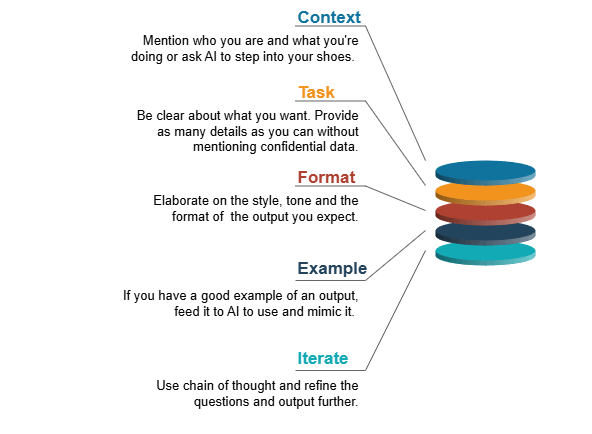
Using Chain of Thought prompts
One powerful technique business analysts can borrow from AI researchers is chain of thought prompting.
Normally, if you ask AI a complex question like “How should a retail company expand internationally?”, it might jump straight to a general answer without showing its reasoning. That can make it hard to trust.
With chain of thought prompts, you ask AI to think step by step. Example:
- Do NOT prompt: “Give me an expansion strategy for a retail company.”
- Better Prompt: “Think step by step. First, identify internal strengths and weaknesses. Then, analyze external opportunities and threats. Finally, suggest two possible expansion strategies and explain the reasoning.”
By providing additional instructions you get not just an answer but also the logic behind the it. It’s like hearing a colleague talk through their thought process.
For business analysts, this is gold: it’s like seeing a junior BA’s notes before they present their recommendation. You can spot gaps, challenge assumptions, or refine the reasoning.
Pro tip: Combine chain of thought with classic BA tools.
For example: “Think step by step using PESTLE. Analyze political, economic, social, technological, legal, and environmental factors that could impact launching a fintech product in Europe.”
The result? A structured, logical breakdown that feels much closer to a proper analysis.
20+ example AI prompts for business analysts
Here’s the fun part: a list of ready-to-use prompts across different BA activities.
1. Stakeholder analysis
- “Act as a business analyst preparing for a stakeholder interview. Suggest 10 open-ended questions to uncover hidden requirements in a financial services project.”
- “Summarize the key interests, motivations, and potential conflicts for the following stakeholder list. Present in a stakeholder map format. [insert details]”
2. Requirements gathering
- “Review this user story: [paste user story]. Suggest improvements using the INVEST criteria (Independent, Negotiable, Valuable, Estimable, Small, Testable).”
- “Draft 5 acceptance criteria for the following requirement: [paste requirement]. Make them clear, testable, and business-friendly.”
3. Process mapping
- “Based on the following text, create a step-by-step outline of the process, highlighting decision points and possible bottlenecks. [paste process description]”
- “Suggest three alternative workflows to improve efficiency in the order-to-cash process. Present them in bullet points.”
4. SWOT analysis
- “Conduct a SWOT analysis for a mid-sized retail company exploring e-commerce expansion. Provide realistic strengths, weaknesses, opportunities, and threats.”
- “Based on this SWOT, suggest three strategic initiatives the business could take. [paste SWOT]”
5. Data analysis & reporting
- “Summarize the insights from this dataset. Highlight trends, anomalies, and business risks in plain English. [paste summary of data]”
- “Create a one-paragraph executive summary of the top three insights from this sales data, avoiding technical jargon.”
6. Communication and storytelling
- “Rewrite this technical requirement so that a non-technical stakeholder can understand it easily: [paste requirement].”
- “Turn these meeting notes into an action list with responsible owners and due dates. [paste notes]”
7. Risk assessment
- “Generate a risk register for a project implementing a new CRM system. Include risk description, likelihood, impact, and mitigation strategy.”
“List potential risks of adopting AI-powered tools in HR, along with ways to address them.”
8. Personal productivity
- “Create a daily planner for a business analyst balancing stakeholder interviews, requirements documentation, and a project workshop.”
- “Suggest a time-blocking schedule for a business analyst working on a software upgrade project, allowing focus time for documentation.”

Real-life example: using AI in a stakeholder workshop
Imagine you have a workshop coming up with three key stakeholders from different departments. You know the finance lead loves detail, the sales manager is impatient, and IT wants technical clarity.
Instead of wondering for hours, you could ask AI:
“Given a workshop with Finance, Sales, and IT to discuss a new CRM system, suggest a facilitation approach, key questions for each group, and potential conflicts to watch out for.”
What you get in response:
- Tailored questions for each group
- Potential conflicts (e.g., Sales wanting speed vs. IT wanting stability)
- Suggestions for neutral facilitation techniques
Now you can walk into the workshop prepared instead of reacting on the fly. That’s the power of smart prompting.
Best practices for using AI prompts for business analyst
A few ground rules to keep things practical:
- Double-check everything. AI can make things up (“hallucinate”). Treat its output like a first draft.
- Keep it confidential. Don’t paste sensitive company data into public AI tools.
- Use it as a partner, not a replacement. AI won’t replace your judgment, stakeholder relationships, or strategic thinking.
- Iterate on prompts. If the output isn’t what you need, tweak the instructions, just like you would reframe a stakeholder question.
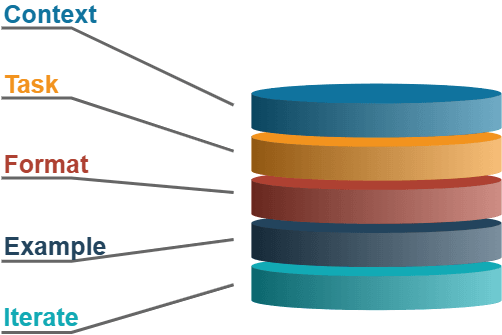
Related business analysis techniques where AI fits
One thing it is crucial to understand is that AI doesn’t replace classic techniques, it supercharges them. Think of it as a shortcut to get from blank page to draft. Here’s where it adds value:
- SWOT, PESTLE, Porter’s Five Forces – Quick first drafts for strategic scans
- VMOST – Drafting vision/mission/strategy alignment ideas
- Process Mapping – Generating text-based outlines before visualization
- Requirements Writing – First-pass requirements or acceptance criteria
Wrapping It Up
If you know how to utilize it properly, AI isn’t coming for your job. It’s like having a really fast junior analyst on your team. The secret to unlocking its value lies in creating good prompts as a business analyst.
Start small: use AI prompts for business analysts to summarize a meeting, draft a requirement, or brainstorm stakeholder questions. Over time, you’ll figure out what works for your style and your projects.
Just like business analysis itself, prompting is all about clarity, context, and curiosity.
So the next time you’re staring at a blank page or a pile of messy notes, try dropping one of the prompts from this guide into AI. You’ll be surprised how quickly it feels like your smartest sidekick.
